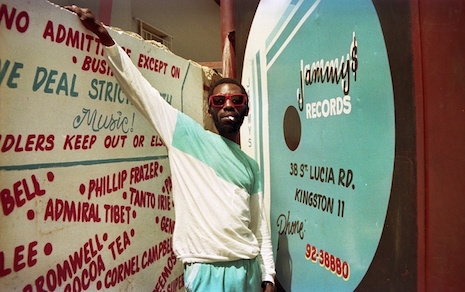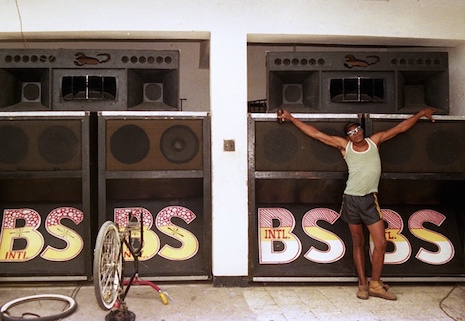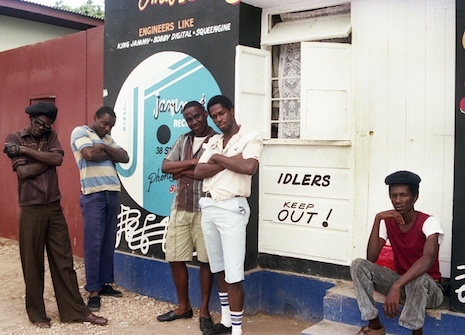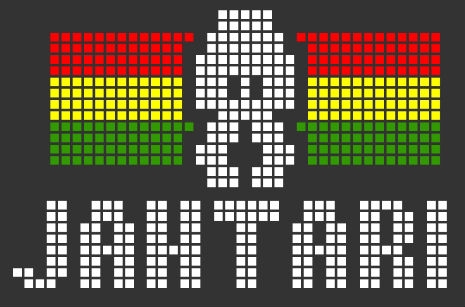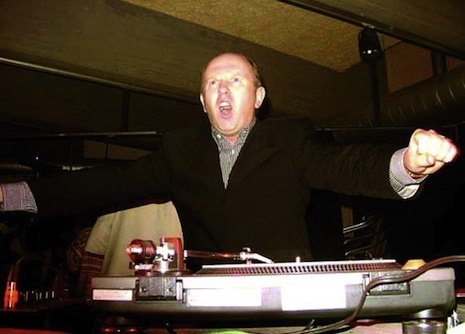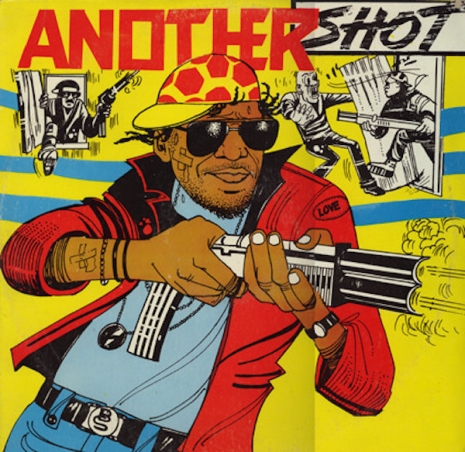
Another Shot comp (1988)
Wilfred Limonious was a prodigiously talented Jamaican artist and cartoonist whose work represents a key document for the the dancehall reggae scene of the mid-1980s. Limonious had a background as a newspaper cartoonist, but in the mid-1980s his work became incredibly in demand for album cover art for the dancehall artists like Yellowman, Little John, and Horace Martin. Between 1983 and 1992, Discogs credits Limonious with a staggering 132 covers—much of his finest album art came in the years 1985 and 1986, when he must have been churning out 3 a month, at a minimum, besides doing who knows what else.
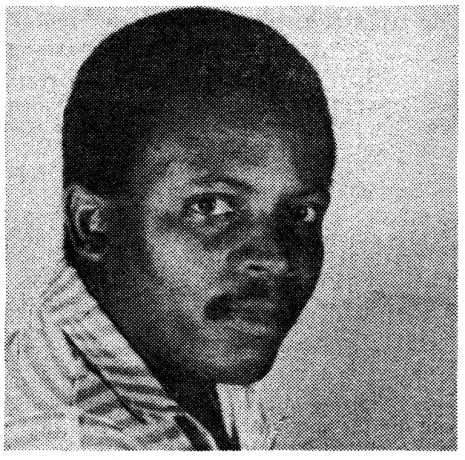
Limonious’ work could take the form of a respectful portrait, a galvanizing call to arms (complete with machine guns, natch), or a hilarious comment on sexual politics. It’s easy to draw a correlation between his work (and perhaps that of dancehall in general) and the hip-hop movement in the United States—both feature a fair amount of braggadocio about sexual and criminal activities.
Limonious was way funnier than most of the art associated with rap, however. His most memorable images are street scenes, usually with a variety of people in them, and often there are scurrilous little goings-on and comments off to the side or tucked in between. In many ways Limonious’ comedic strategies call to mind the busy imagery of MAD Magazine.
As British reggae historian Steve Barrow has said,
Looking back at Limonious’s work now, it’s clear that he is an important part of a global cartooning continuum. The exaggerated caricatures of artists such as the 18th-century cartoonist Thomas Rowlandson, the late 19th-century German artist Lothar Meggendorfer, the early 20th-century US comic artist George Herriman, Chic Young, the creator of Blondie, and the renowned UK artists Dudley Watkins and Leo Baxendale, who worked on DC Thompson company titles The Beano and The Dandy, can all be cited as antecedents. So, while his jacket artwork––at first glance––is obviously focussed on Jamaican popular culture, at the same time his work forms part of a larger world––that of international graphic culture.
Limonious’ images are so fun, arresting, and vibrant that it’s well-nigh irresistible to come up with comps. The first thing that entered my mind was the four covers Corky McCoy did for Miles Davis in the early 1970s—most notably On the Corner but also In Concert, Big Fun, and Water Babies. It’s also hard not to think of Los Bros Hernandez, and some of his more casual work (the cartoons and some of the back images palaver) reminds me (if no one else) of Garry Trudeau’s early Doonesbury cartoons, while he was still at Yale.

Remarkable sample of Limonious’ hand-drawn type, endpaper for In Fine Style by Christopher Bateman
Limonious sadly passed away at the age of 50 on December 27, 1999. It took a while for the rest of the world to pay attention to the jaw-dropping vibrancy of Limonious’ work, but it’s finally happening. Three years ago Christopher Bateman published In Fine Style: The Dancehall Art of Wilfred Limonious, which is quite simply one of the finest coffee table books you could ever hope to own, and the stylemaker Supreme has been releasing T-shirts with Limonious’ imagery on them.

Dance Hall Time comp (1986)
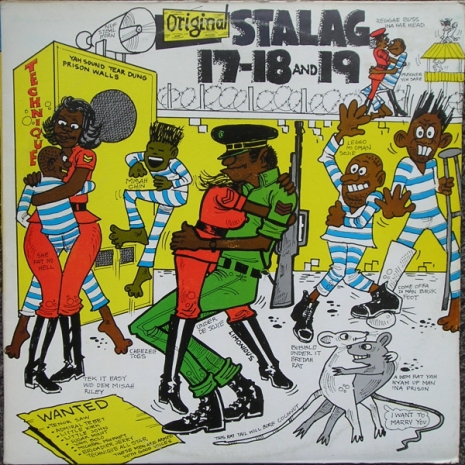
Original Stalag 17, 18 and 19 comp (1984)
Many more examples of Limonious’ marvelous album art after the jump….....







